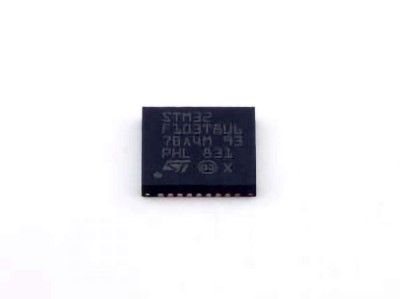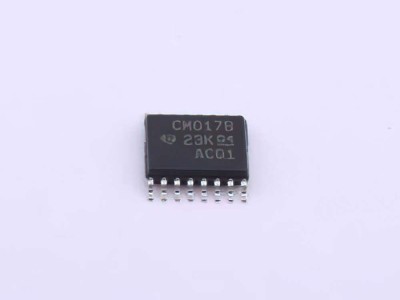
The LM324 operational amplifier (op-amp) is one of the most widely used analog ICs, revered for its versatility and functionality in various signal processing applications. This article explores the multiple applications and techniques of using the LM324 op-amp in analog signal processing, highlighting practical solutions and design strategies for electronic engineers and hobbyists alike.
Understanding the LM324 Operational Amplifier and its Fundamentals
The LM324 is a versatile and widely used quad op-amp (containing four independent op-amps in a single package) that finds applications in many analog signal processing circuits. Its widespread usage across industries, including Audio processing, sensor signal conditioning, and voltage regulation, makes it an essential component for both professionals and enthusiasts.
1.1 The LM324: A Brief Overview
The LM324 operational amplifier, designed and manufactured by Texas Instruments and other leading semiconductor companies, is an integrated circuit with four independent op-amps, all of which operate from a single Power supply. It is popular because of its low cost, low power consumption, and ease of use, making it ideal for a range of applications, from audio amplification to industrial signal processing.
Typically, the LM324 comes in an 8-pin dual in-line package (DIP), but it can also be found in other configurations such as su RF ace-mount packages. The device has a wide operating voltage range, typically from 3V to 32V for single supply and ±1.5V to ±16V for dual supplies. Additionally, it features an input voltage range that allows it to handle both negative and positive inputs, adding flexibility to circuit design.
1.2 The Basic Function of Operational Amplifiers
Before diving into the specific applications of the LM324, it is essential to understand the fundamental concept of an operational amplifier. An op-amp is a high-gain electronic voltage amplifier that can amplify the difference between two input voltages. An ideal op-amp has infinite gain, infinite input impedance, and zero output impedance. While real op-amps like the LM324 do not possess these ideal characteristics, they come close enough for most practical applications.
The two most common configurations for op-amps are the inverting and non-inverting amplifiers, where the input signal is either applied to the inverting input (negative terminal) or the non-inverting input (positive terminal) to produce the desired amplified output. The versatility of the op-amp lies in its ability to be used in many different configurations, offering a wide array of signal processing solutions.
1.3 Key Features of the LM324 for Signal Processing
The LM324 has several key features that make it ideal for analog signal processing applications:
Low Power Consumption: The LM324 operates with very low power consumption, making it perfect for battery-powered systems and portable devices.
Wide Voltage Range: The operational voltage range of the LM324 is suitable for a variety of circuits, from low-voltage sensor interface s to higher voltage audio and control systems.
Low Offset Voltage: The op-amp has a low input offset voltage, ensuring that it can provide precise amplification without significant errors or distortion.
Single Supply Operation: It can operate on a single power supply, simplifying circuit design and reducing component count, especially in systems that only have access to a positive supply voltage.
With these features, the LM324 has become a preferred choice in many analog signal processing applications, particularly in circuits where low power, precision, and simplicity are required.
Practical Applications of the LM324 in Analog Signal Processing
Now that we have covered the fundamentals of the LM324, let’s explore its specific applications in analog signal processing. The LM324 is highly versatile, with numerous uses across various fields such as audio amplification, filtering, signal conditioning, and more.
2.1 Signal Amplification
One of the primary uses of the LM324 operational amplifier is signal amplification. The ability to amplify weak signals is crucial in numerous applications, such as audio electronics, sensor interfacing, and communication systems. The LM324 can be configured as an inverting or non-inverting amplifier, allowing users to select the appropriate configuration depending on the desired output characteristics.
2.1.1 Inverting Amplifier
In an inverting amplifier configuration, the input signal is fed into the inverting input of the op-amp, and the non-inverting input is grounded. The output signal is inverted (i.e., 180 degrees out of phase with the input), and its amplitude is proportional to the input signal, determined by the ratio of the feedback resistor to the input resistor.
The inverting amplifier provides high gain, which makes it useful in applications where signal enhancement is required, such as in audio preamplifiers or instrumentation amplifiers. In this setup, the LM324 can amplify low-level audio signals for further processing or transmission.
2.1.2 Non-Inverting Amplifier
On the other hand, the non-inverting amplifier configuration is used when the goal is to maintain the same phase relationship between input and output signals. The input signal is applied to the non-inverting input, and a feedback resistor is used to set the gain. Since the output signal is in phase with the input, this configuration is ideal for applications where signal integrity needs to be preserved.
Non-inverting amplifiers with the LM324 are often used in audio systems, sensor signal conditioning, and other applications where the input signal must be amplified without distortion or phase inversion.
2.2 Active filters
Active filters are critical components in signal processing systems, especially when it comes to eliminating unwanted noise or isolating certain frequency bands. The LM324 operational amplifier is frequently used to design active low-pass, high-pass, band-pass, and band-stop filters. These filters use the op-amp to amplify the desired frequency range while attenuating unwanted signals.
2.2.1 Low-Pass and High-Pass Filters
Low-pass filters allow signals below a specific cutoff frequency to pass while attenuating higher frequencies. Conversely, high-pass filters allow higher frequencies to pass while blocking lower frequencies. These filters are used in a wide range of applications, from audio processing to communication systems, where certain frequencies need to be emphasized or suppressed.
The LM324 can be used to design both types of filters with the appropriate resistors and capacitor s, offering a cost-effective solution for building analog signal conditioning circuits. By selecting the right components, users can customize the cutoff frequencies to suit their specific needs.
2.2.2 Band-Pass and Band-Stop Filters
For more complex filtering tasks, such as isolating a particular frequency band or rejecting a specific range of frequencies, the LM324 can also be used to construct band-pass and band-stop filters. These filters are commonly used in applications such as audio equalizers, RF signal processing, and noise reduction systems.
A band-pass filter allows signals within a specific frequency range to pass while blocking frequencies outside this range. Similarly, a band-stop filter attenuates a specific frequency range while allowing others to pass. By using multiple LM324 op-amps in a design, engineers can create sophisticated filtering circuits that meet precise frequency response requirements.
2.3 Signal Conditioning
Signal conditioning is the process of modifying or conditioning an incoming signal to ensure it meets the required specifications for further processing. The LM324 plays an essential role in sensor signal conditioning, where raw signals from sensors (such as temperature, pressure, or light sensors) need to be processed for accurate measurement and control.
In these applications, the LM324 can be configured as a voltage follower (buffer), differential amplifier, or integrator to provide the necessary gain, isolation, and filtering. For example, when interfacing with a thermocouple or strain gauge, an LM324 operational amplifier can amplify the sensor’s low-level output signal while maintaining its linearity and minimizing noise.
2.4 comparator Circuits
Another notable application of the LM324 is as a comparator in digital systems. A comparator is a device that compares two input voltages and outputs a digital signal (high or low) based on the comparison. The LM324 op-amp can be used to design simple and efficient comparator circuits for applications like zero-crossing detection, pulse width modulation (PWM) generation, and over-voltage protection.
By configuring the op-amp with appropriate reference voltages and feedback, users can create comparator circuits that provide a clean, sharp transition between high and low states, making them ideal for triggering other electronic devices or circuits.
2.5 Audio Circuits
The LM324 is a popular choice in audio signal processing due to its low noise, low distortion, and ability to handle wide frequency ranges. Whether it’s used for preamplification, tone control, or active filtering, the LM324 provides an excellent solution for designing high-quality audio circuits.
In audio systems, the LM324 is often used to build equalizers, amplifiers, mixers, and other audio processing circuits. Its low power consumption makes it suitable for portable audio equipment, such as battery-operated amplifiers or handheld audio recorders.
Conclusion
The LM324 operational amplifier is a remarkably versatile component in the world of analog signal processing. From amplifying weak signals to filtering specific frequency bands, conditioning sensor signals, and even designing comparators and audio circuits, the LM324 can be used in a wide range of applications. Its low cost, ease of use, and broad functionality make it an invaluable tool for electronics enthusiasts, engineers, and designers alike.
By mastering the techniques outlined in this article, users can leverage the full potential of the LM324 to create robust, efficient, and cost-effective analog signal processing circuits that meet the needs of modern electronics.
If you are looking for more information on commonly used Electronic Components Models or about Electronic Components Product Catalog datasheets, compile all purchasing and CAD information into one place.


